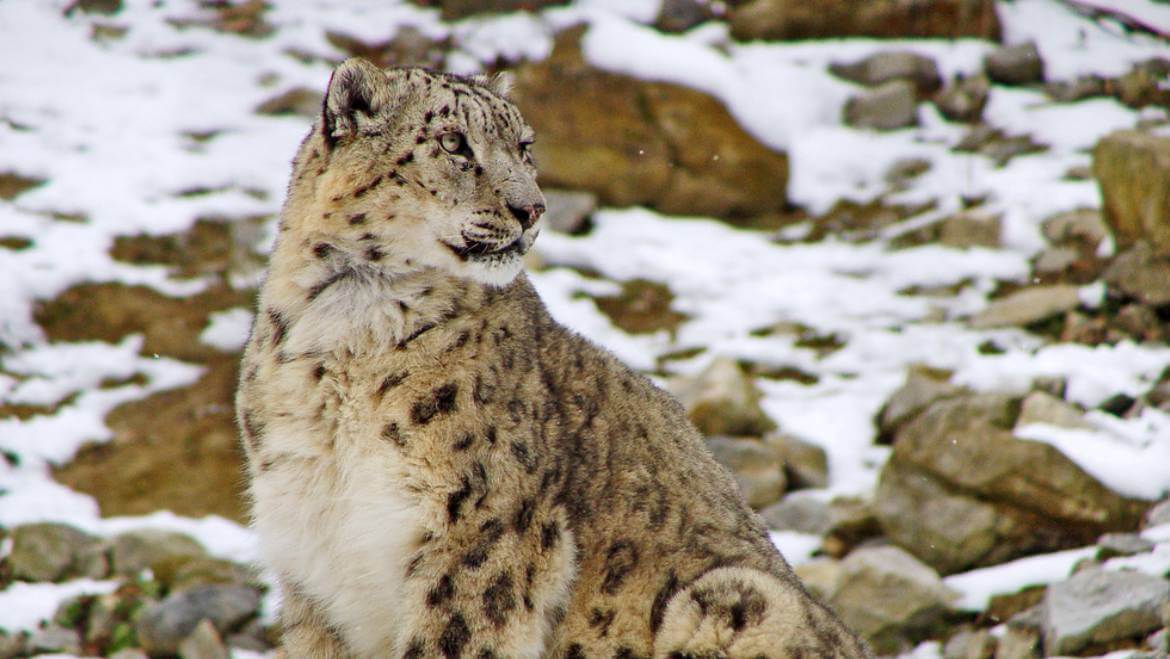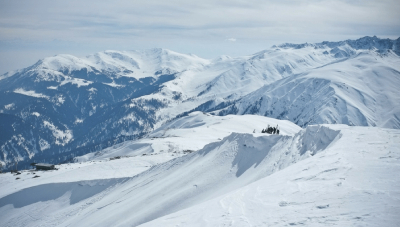According to World Wildlife Federation (WWF) India, there are only 450-500 snow leopards in India. Also known as the ‘Grey Ghost’ this endangered species can be found in the western Himalayan states of Uttarakhand, Himachal Pradesh, Ladakh, Sikkim and Arunachal Pradesh. These strikingly beautiful animals are found at elevations between 3,000-5,000 metres or higher in the Himalayas. Although their sighting is rare, the wildlife lovers do not lose hope and in order to get a mere glimpse of this beautiful animal they wander in the wilderness of Indian Himalayas. If you are amongst these enthusiasts who often dream to catch the sight of this majestic feline species, given below are the best places to sight the snow leopard in India.
Here’s the List of Top Destinations to Spot Snow Leopards in India:
| Name of The Place |
Location (State) |
| Hemis National Park |
Ladakh |
| Kumaon Hills |
Uttarakhand |
| Great Himalayan National Park |
Himachal Pradesh |
| Pin Valley National Park |
Himachal Pradesh |
| Gangotri National Park |
Uttarakhand |
| Upper Spiti Valley |
Himachal Pradesh |
| Govind Pashu Vihar National Park |
Uttarakhand |
| Nanda Devi National Park |
Uttarakhand |
| Khangchendzonga National Park |
Sikkim |
| Namdapha National Park |
Arunachal Pradesh |
Before letting you know about the places where snow leopard sightings can be experienced, let us introduce you some interesting facts about the species.
Some Interesting Facts About Snow Leopard-
- One of the top facts about snow leopards is, study shows that the snow leopard (Scientific name: Panthera uncia) is more likely to tigers; not actually a leopard at all.
- There are three subspecies of snow leopard, such as P.u. uncia, P.u. uncioidies and P.u. irbis.
- Snow leopard is the only species under the ‘Panthera’ category which cannot roar. They can only chuff, hiss, mew and growl.
- Snow leopards are mammals, which fall under the feline family.
- Snow leopards are covered with white-greyish fur (to match the icy environment) that protects them and keeps them insulated in cold weather.
- The tail of the snow leopard measures 80 to 105 cm long, which helps them to balance and adds warmth when wrapped around the body.
- An individual snow leopard weighs between 27 and 54 kilograms.
- The size of a female snow leopard is generally around two-thirds of a male.
- Snow leopards have long hind legs and short forelimbs to walk in the steep and rugged terrains.
- They usually live in high altitude terrains, at elevations of 3,000 to 4,500 metres.
- Snow leopards can cover 25 miles in a single night, which is considered to be the usual distance of a marathon.
- Snow leopards can leap up to 9 metres, which is six times their body length.
- The exact number of snow leopards in the world is unknown as they are extremely elusive. However, the number has been constantly decreasing due to habitat loss, poaching, human-wildlife conflict, climate change and other reasons. WWF (World Wildlife Fund) is working along with Governments, communities and other organisations to address the threats snow leopards have been facing.
Hemis National Park, Ladakh
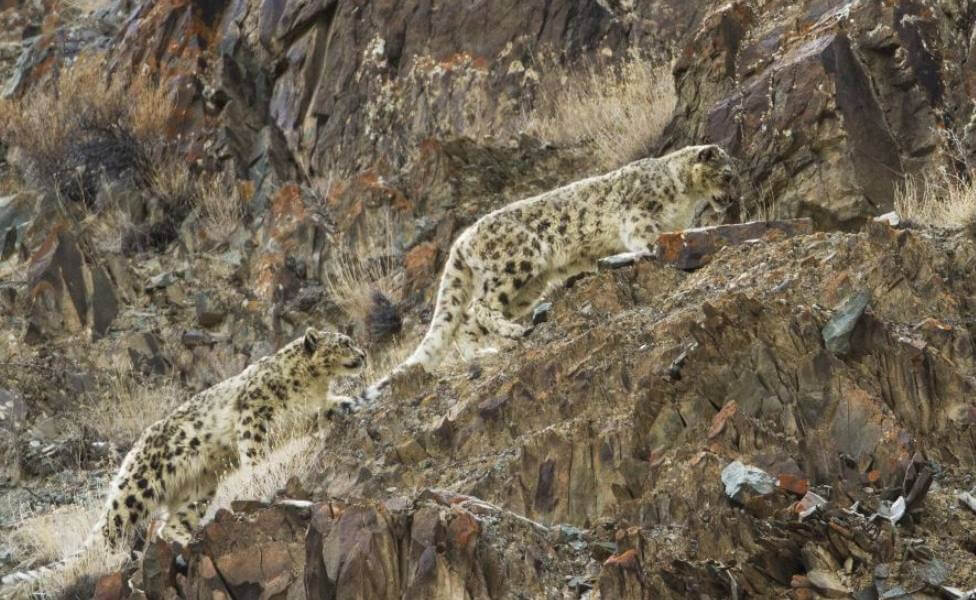
The Hemis National Park is a high-altitude wildlife reserve that extends over 600 sq km. The park is named after the famous monastery, Hemis Gompa. The park is home to around 200 snow leopards, which is considered to be the highest density found in any protected area of the world. The wildlife reserve is situated on the west bank of the Indus River and comprises the catchments of Markha, Rumbak and Sumdah valleys. The Rumbak Valley area in Hemis National Park is quite famous for the sighting of snow leopards in the entire Ladakh region. Special treks are organised in the winter to catch the glimpse of this endangered species. The other zones of the park are also famous for inhabitation of some rare species like the bharal.
Best Season for Sighting: Winter (October to December)
How to Reach?
The nearest airport to Hemis National Park is Leh Kushok Bakula Rimpochee Airport. You can fly to Leh and then hire a private cab to reach the park. Otherwise, you can visit it via Leh-Manali Highway or NH 1D (Srinagar – Kargil – Leh) from Manali or Srinagar by road.
Nearby Places to Visit
- Shey
- Hemis Monastery
- Stok
- Nubra Valley
- Tso Kar Lake
Also Read: Wildlife Tourism in Ladakh
Kumaon Hills, Uttarakhand
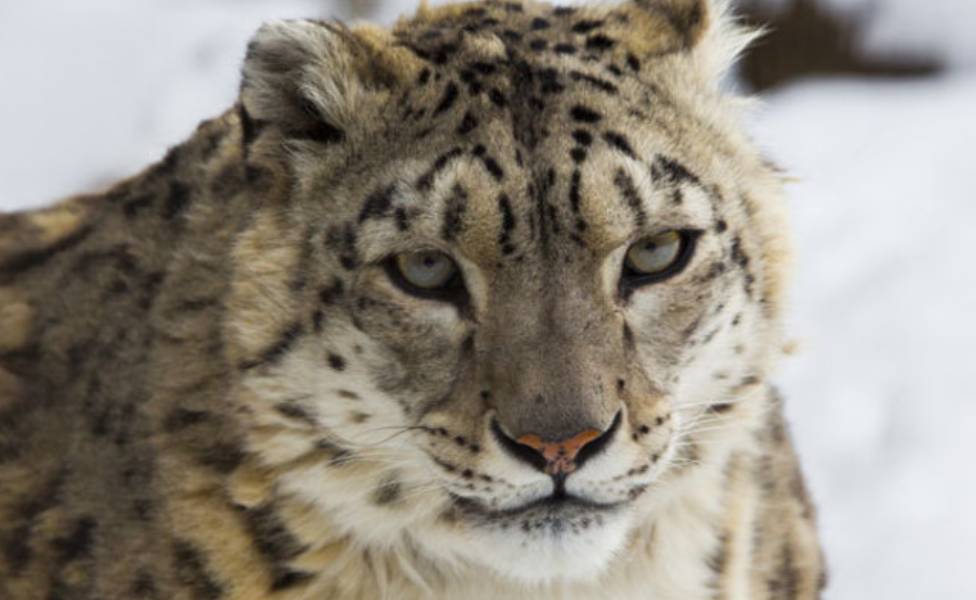
It is said that Kumaon hills are the home of many wildlife species in the country. The better half of the Garhwal region, Kumaon is also reckoned the home of rare species like the Himalayan snow leopard. It is said that a decent amount of 10% of the entire population of this endangered species can be found in Uttarakhand. And the Kumaon hills above the scenic Munsiyari are inhabited by a few of these snow leopards. One can opt for a snow leopard trek here in winter to be able to sight these beautiful big cats. In June 2015, the presence of snow leopards in the Kumaon Hills was first captured at an altitude of 4,100 metres in Bageshwar district of Uttarakhand. Moreover, in 2022, Uttarakhand Forest Department revealed on World Snow Leopard Day, that now there are about 121 snow leopards in the state, which was 86 in 2016.
Best season for sighting: Winter (November to March)
How to Reach?
Kumaon Hills is not a particular place in Uttarakhand; it is a region. The districts of Uttarakhand included in the Kumaon Region are Nainital, Bageshwar, Almora, Champawat, Udham Singh Nagar and Pithoragarh.
Nearby Places to Visit:
- Nainital
- Almora
- Bageshwar
- Kausani
- Binsar
- Ranikhet
- Mukteshwar
Other Interesting Blog to Read
Great Himalayan National Park, Himachal Pradesh
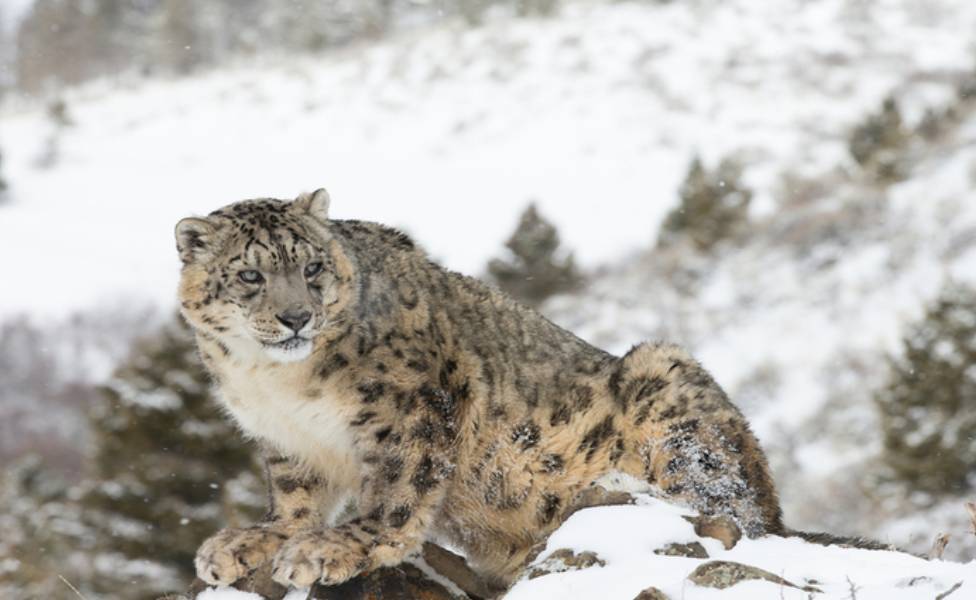
The Great Himalayan National Park is recognised as a world heritage site by UNESCO as it protects 31 species of mammals, 209 birds, 125 insects, 12 reptiles and 9 amphibians. The diversity of the park is what makes it unique in all senses. Apart from being the home of many Himalayan species of flora and fauna, the wildlife reserve is a shelter of snow leopards that are believed to inhabit the highest area of the park above the tree-line. As we have already mentioned that this endangered species prefers steep, rugged terrains with rocky outcrops and ravines along with isolation, thus the upper part of the national park makes an ideal destination for them to live.
Best season for sighting: Winter (October to December)
How to Reach?
Great Himalayan National Park (GHNP) is located in Shamshi, Himachal Pradesh. The most reliable way to reach GHNP is to take a bus from New Delhi to Aut, which is two hours before Manali. From Aut, you have to hire a cab or taxi to Banjar/Gushaini or Sainj/Niharni with respect to your plan. However, the nearest airport to the park is in Bhuntar, Kullu and the nearest railway station is Joginder Nagar in Mandi.
Nearby Places to Visit:
- Dechen Choekhor Buddhist Monastery
- Sainj Valley
- Tirthan Valley
- Kullu Valley
- Parashar Lake
Also Read: Wildlife Tourism in Himachal Pradesh
Pin Valley National Park, Himachal Pradesh
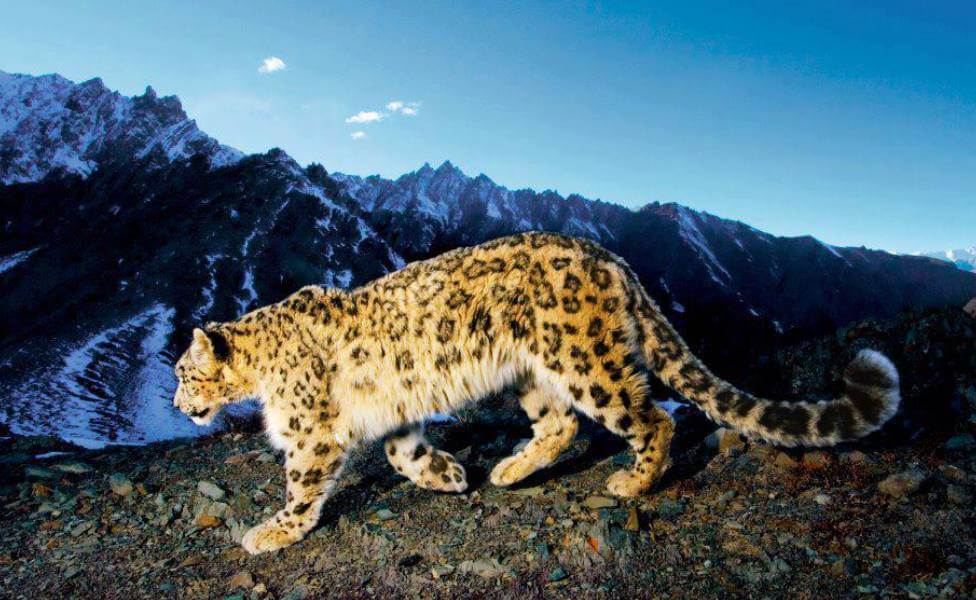
Situated in the Lahaul and Spiti district of Himachal Pradesh, Pin Valley National Park is one of the safest places for snow leopards in the Himalayas. Covering an area of 675 square kilometres within Himalayan Cold Reserve Biosphere Reserve, the park is the home for more than 20 species of animals and birds, including the endangered Snow leopard. It is believed that there are about 12 snow leopards in the park and can be best sighted during the winter season when they migrate in the lower areas for finding food and water.
Best season for sighting: Winter (October to December)
How to Reach?
You have to reach Pin Valley via road. There are two routes: one is open from June to October, Kullu – Manali – Rohtang Pass – Kunzum La – Kaza and Pin Valley. Another is open from April to November, Shimla – Tapri – Nako – Tabo – Kaza and Pin Valley. The nearest airport is Chandigarh Airport as well as the nearest railhead is Chandigarh.
Nearby Places to Visit:
- Spiti Valley
- Bhabha Pass
- Dhanka Gompa
- Tabo Caves
- Chandratal Lake
Other Interesting Blog to Read
Gangotri National Park, Uttarakhand
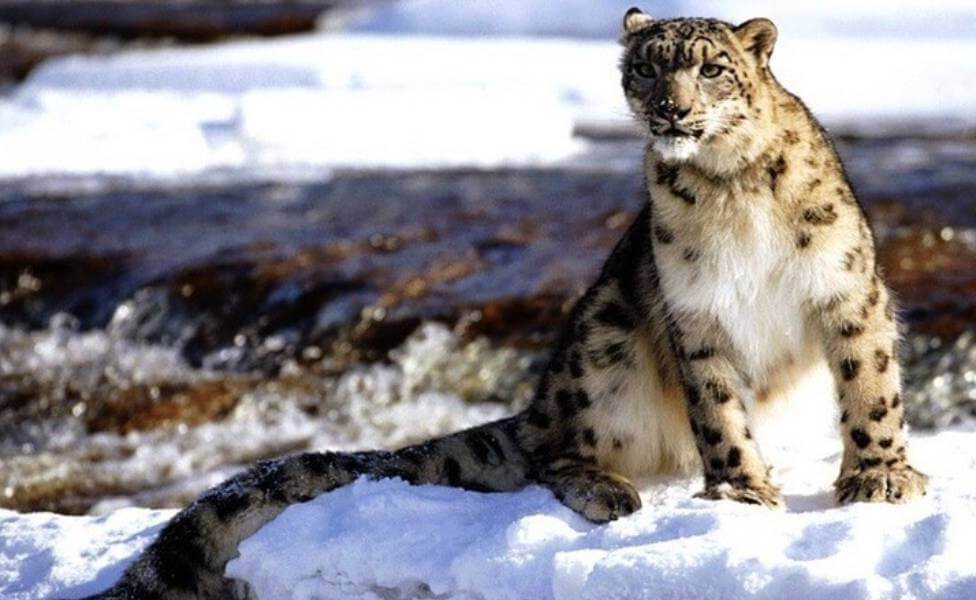
In December 2013, the first sighting of the snow leopard in Gangotri National Park was documented. Ever since, the park has become a decent place to spend snow leopard safari holidays in India as well as in Uttarakhand. Moreover, in June 2022, 40 snow leopards were spotted through more than 300 cameras that are installed throughout the park. Uttarkashi’s Gangotri National Park has now truly become a haven for this wonderful species. Covering an area of 2,390 sq km at the heights between 1,800 and 7,083 metres, the park is reckoned to be an important link between Govind Pashu Vihar National Park and Kedarnath National Park. Apart from snow leopards, the wildlife sanctuary is home to species like Blue sheep, Black bear, Tiger, Brown bear, Himalayan thar and Musk deer.
Best season for sighting: Winter (October to December)
How to Reach?
If you are going by road to the park, you have to take route 108, that passes through Uttarkashi district, where it is located. The nearest railhead and airport is in Dehradun, which is 206 kilometres away from Gangotri National Park. Moreover, Haridwar is 189 kilometres and Delhi is 402 kilometres from the park.
Nearby Places to Visit:
- Gangotri Temple
- Nelong Valley
- Bhojbasa
- Gaumukh
- Tapovan
- Kedartal
Other Interesting Blog to Read
Govind Pashu Vihar National Park, Uttarakhand
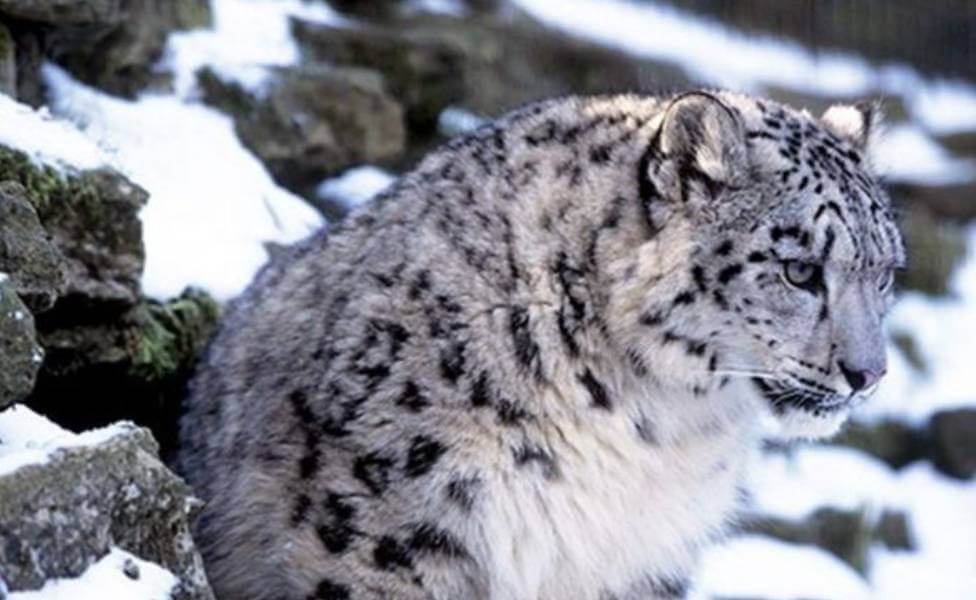
Govind Pashu Vihar in the upper Garhwal region of Uttarakhand is yet another place that shelters the snow leopards which is considered an endangered species in India. The park is spread over an area of about 472.08 sq km and is said to be established with purpose to provide protection to slowly eloping species of snow leopard that resided in the upper reaches of the park at altitudes above 3,500 metres. The park is also one of the remaining strongholds in the Himalayas of the bearded vulture, which is a vital ecological catalyst. Apart from this, Govind Pashu Vihar is also home to rare bird species like Monal Pheasant, Koklass Pheasant, Bearded Vulture, Himalayan Snow fowl, Golden Eagle, Western Tragopan, Steppe Eagle and Black Eagle.
Best season for sighting: Winter (September to December)
How to Reach?
The nearest airport and railhead to the national park, both are in Dehradun, which is around 200 kilometres. By road, it can be accessed through Dharkadhi, 17 kilometres from the park. Dharkadhi is connected with Dehradun, Barkot, Uttarkashi and Naitwar by bus services.
Nearby Places to Visit:
- Swargarohini Peak
- Sankri
- Marinda Tal
- Juda ka Talab
- Borasu Pass
Also Read: Best Wildlife Treks in India
Nanda Devi National Park, Uttarakhand
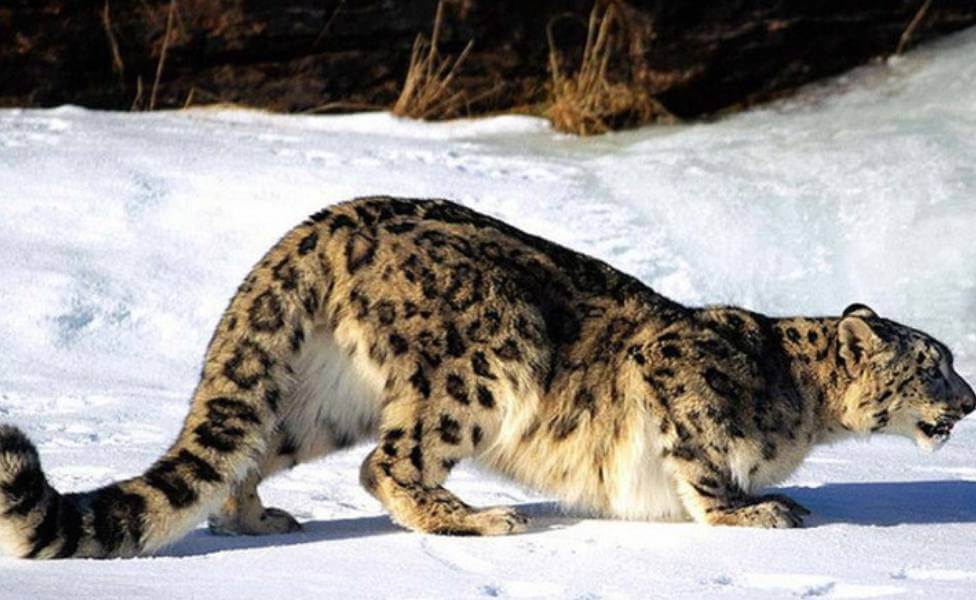
The famed Nanda Devi National Park in Uttarakhand is a richly diverse area and is home to rare and endangered animals, including the Asiatic black bear, brown bear, blue sheep and snow leopard. Spread across the three districts in Uttarakhand, Chamoli, Pithoragarh and Bageshwar, the park is also known as the home of 7,817 metres tall Nanda Devi Peak, which is the second highest mountain in India. The Valley of Flowers National Park is contiguous to Nanda Devi and it was inscribed as a World Heritage Site by UNESCO in 1988. These two parks together make one of the best places to go trekking, wildlife spotting and snow leopard sightings in North India.
Best season for sighting: The park remains open from May to October. For sightings, visit in September or October.
How to Reach?
Nearest roadhead is Lata, up to where you can reach by bus from Joshimath (distance is around 30 kilometres). Joshimath is connected to Rishikesh and other cities in Uttarakhand by bus services. Moreover, the nearest airport is in Dehradun and Rishikesh is the nearest railhead.
Nearby Places to Visit
- Valley of Flowers National Park
- Gorson Bugyal
- Badrinath Temple
- Joshimath
- Auli
- Kuari Pass
- Dharansi Pass
- Pangarchulla
Other Interesting Blog to Read
Khangchendzonga National Park, Sikkim
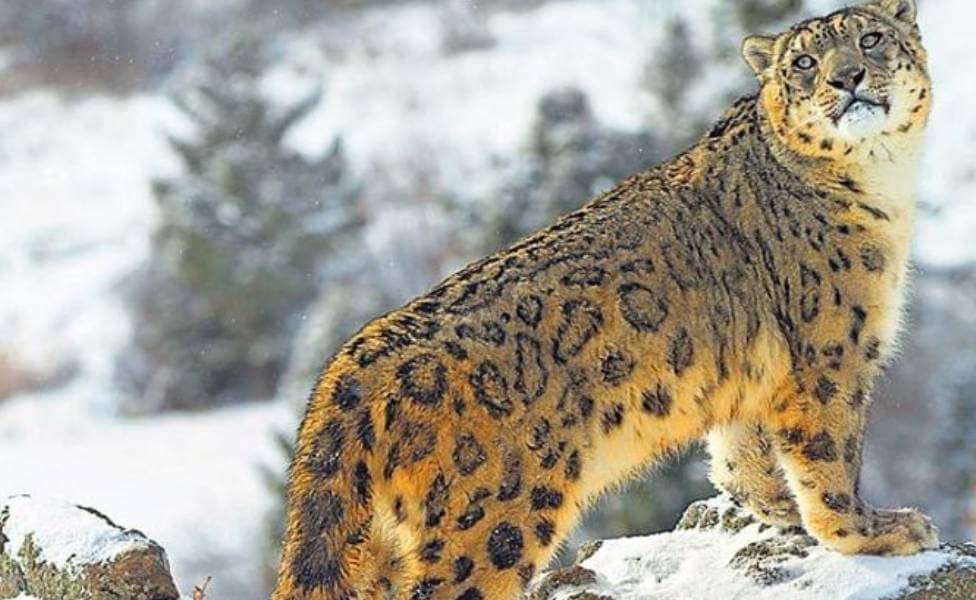
Also known as the Kanchenjunga Biosphere Reserve, this wildlife destination in Sikkim is one of the best places for sightings of snow leopard in India apart from Himachal Pradesh and Uttarakhand. Spread over an area of about 850 sq km, Khangchendzonga National Park extends from the cold deserts of Lhonak Valley and the ridges of Lachen to the historical place at Yuksom in North Sikkim. Its upper realm makes for a decent home for snow leopards who are sighted someday or the other. Apart from snow leopards, the national park is also popular for being home to India’s half bird diversity, orchids, wild trees and one-third of India’s flowering plants. The national park occupies around 40 percent of Sikkim, which makes it one of the highest ecosystems in the world.
Best season for sighting: Winter (October to December)
How to Reach?
You can reach the national park via NH 31A that connects West Bengal (via Sevoke) and Sikkim. The park is around 45 kilometres from Gangtok. The nearest towns to Khangchendzonga National Park are Yuksom in West Sikkim and Chungthang in North Sikkim.
Nearby Places to Visit:
- Yuksom
- Tashi Tenka Monastery
- Tashiding Monastery
- Dubdi Monastery
- Coronation Throne of Norbugang
- Kartok Monastery
- Gangtok
Also Read: Wildlife Tourism in Sikkim
Namdapha National Park, Arunachal Pradesh
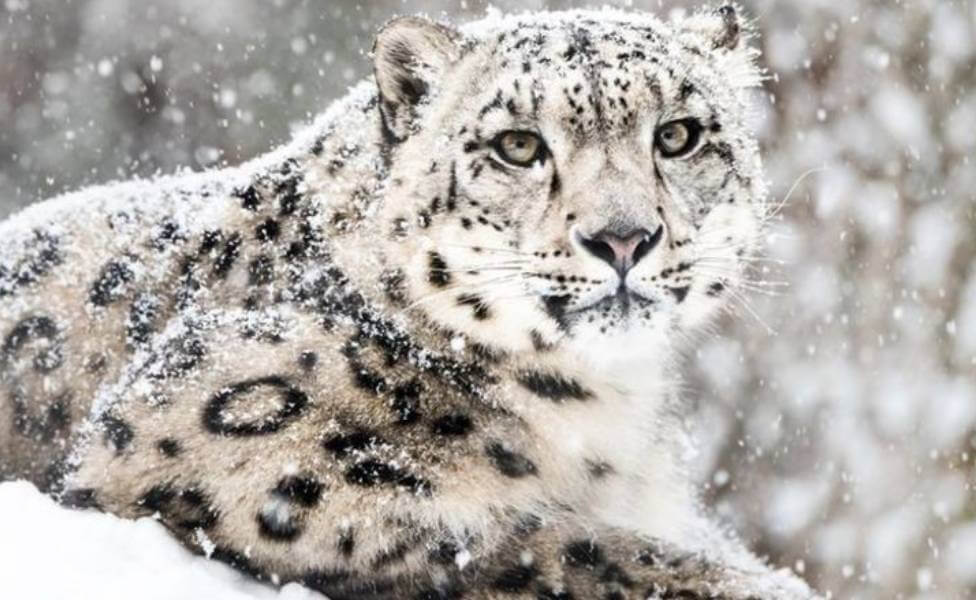
Namdapha is probably the only park in the world to have the four feline species, namely the Tiger, Leopard, Snow Leopard and Clouded Leopard at one place. Namdapha covers an area of 1985.23 sq kms and has a diverse range of flora and fauna. It lies on the international border between India and Myanmar (Burma) within Changlang District in the state of Arunachal Pradesh. Winter is an ideal time to catch the glimpse of snow leopards in Namdapha, covered in snow then, the park gives a good opportunity to spot these ‘grey ghosts of the forests.
Best season for sighting: Winter (October to December)
How to Reach?
Dibrugarh Airport and Tinsukia Railway Station are two nearest points to reach Namdapha National Park. Moreover, you can reach the national park by taking a bus (Assam State Transport Corporation) from Assam (Dibrugarh) to Miao (Arunachal Pradesh). Miao is the entry point of Namdapha National Park, located in the Changlang District.
Nearby Places to Visit:
- Miao Museum
- Miao Mini Zoo
- Moti Jheel Buffer Zone
- Raja Jheel
- Gandhigram
- Deban
Other Interesting Blog to Read
Upper Spiti Valley, Himachal Pradesh
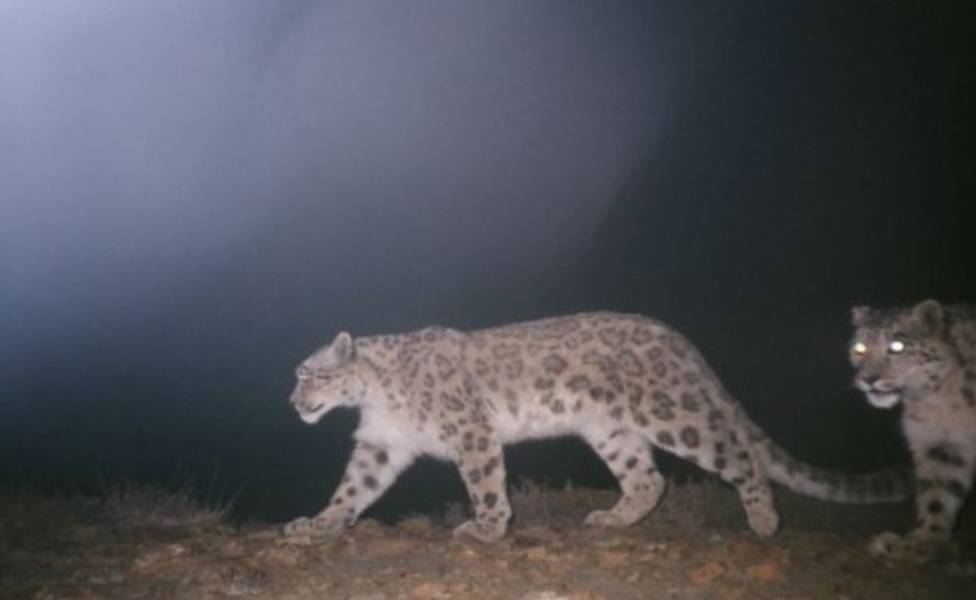
The Lahaul and Spiti District offers some of the best experiences in the Indian Himalayas and amongst them is the unforgettable memory of sighting a snow leopard. In the Upper Spiti Valley, it is believed a thick population of snow leopards rein the area. Although the chances of sighting them are quite thin, Upper Spiti Valley in winter does make a feasible destination in India for spotting snow leopards. Moreover, in January 2022, three snow leopards were spotted near Kaza, which clearly indicates an increase in the number of snow leopards in the Indian Himalayas.
Best season for sighting: Winter (October to January)
How to Reach?
You can reach Spiti Valley via Shimla or Manali. The route via Shimla is accessible in any season, specifically in winters. You can take a bus from New Delhi to Shimla or Manali and then hire a cab from there. Both the nearest airport and railhead are in Chandigarh.
Nearby Places to Visit:
- Key Monastery
- Chandratal Lake
- Pin Valley National Park
- Suraj Tal
- Tabo Monastery
- Kunzum Pass
- Kaza
- Dhankar Lake
Other Interesting Blogs to Read
Sighting snow leopards in one of these above-mentioned places is nothing but a magical experience. If you have made up your mind on spotting snow leopards once in your lifetime, especially in this winter, then let Tour My India help you.
TMI offers customised wildlife holiday tours that you cannot resist. With expertise, TMI caters to all your needs and indeed offers an experience unlike any other. You can reach us directly over phone or message or drop us an email at info@tourmyindia.com for more on our lucrative India tour packages that are designed for your pocket.
Other Interesting Blogs to Read
Like & Follow our social media accounts at Twitter, Facebook, Linkedin & Instagram for getting the latest updates & offers on holiday packages.
Disclaimer: This content is written by our team of expert Travel Writers with deep research. In case you find any incorrect information or missing information, please do send your valuable inputs at webmaster@tourmyindia.com. We will update the content as soon as possible with respect to your inputs.
We do not take credit for some of the licenced paid images used in our blogs, whether from Google Images, Fotolia & Shutterstock. All such images are the copyrights of their respective owners and we try to provide credit for them wherever we can. If, however, any copyright image has been used on our blog, the concerned person can either mail us directly to remove the image or provide credit to whomsoever the image may belong to.
Frequently Asked Questions
Where do snow leopards live?
Snow leopards basically live in high altitude mountains, rugged and cold landscapes in India, Nepal, Tibet, Bhutan, Pakistan, Afghanistan, China, Russia, Mongolia, Kazakhstan, Kyrgyzstan, Uzbekistan and Tajikistan.
How many Snow Leopards live in India?
Research shows around 400 to 700 snow leopards live in India.
Why is the Snow Leopard population decreasing?
The number of snow leopards has been constantly decreasing due to habitat loss, poaching, human-wildlife conflict, climate change and other reasons. WWF (World Wildlife Fund) is working along with Governments, communities, and other organisations to address the threats snow leopards have been facing.
What is the population of snow leopards across the world?
The population of snow leopards across the world is around 4,000.
At which altitude Snow Leopards are found?
Snow leopards are found in high altitudes, above 3,000 metres.
Which are the best places for snow leopard sightings in Uttarakhand?
Snow leopard sightings can be done in Uttarakhand in these places:
- Nanda Devi Biosphere Reserve
- Gangotri National Park
- Kumaon Hills
- Govind Pashu Vihar National Park
Which are the top places for Snow Leopards sightings in Himachal Pradesh?
The top places for Snow Leopards sightings in Himachal Pradesh are:
- Pin Valley National Park
- Upper Spiti Valley
- Great Himalayan National Park
In which area of Ladakh can we discover Snow Leopards?
In Hemis National Park, Ladakh we can spot snow leopards.
Which is the best time for Snow Leopard Safari in India?
Winters from October to March are the best time for snow leopard safari in India as due to heavy snowfall, the animals come down to the lower region to search for food.
About the author
Having an experience of more than 16 yrs in the Himalayas, Arun is the main driving force & mentor at the Peak Adventure Tours, a leading adventure travel agency in India offers trekking tours in Indian Himalayas including Nepal, Bhutan & Tibet. A long history with exceptional experiences he is the “Marathon Man” in the field of adventure. Today Arun looks after the Peak Adventure and shapes & designs the venture of the organization. He is contributing to this blog as a regular guest author.

 +91-9212777225
+91-9212777225 Plan Your trip
Plan Your trip